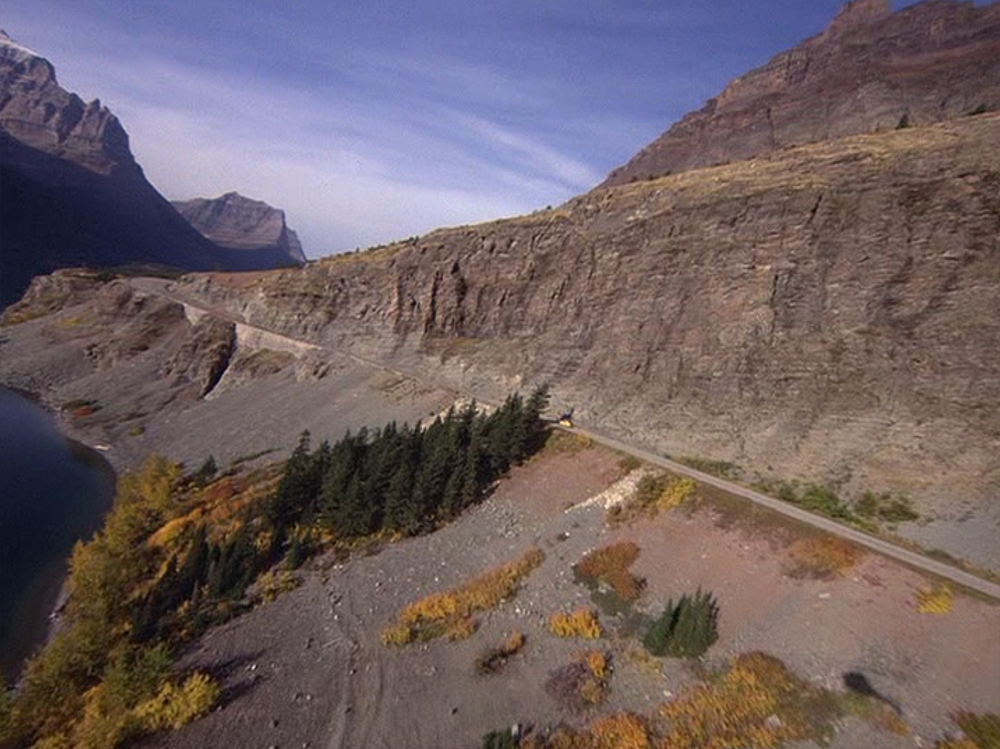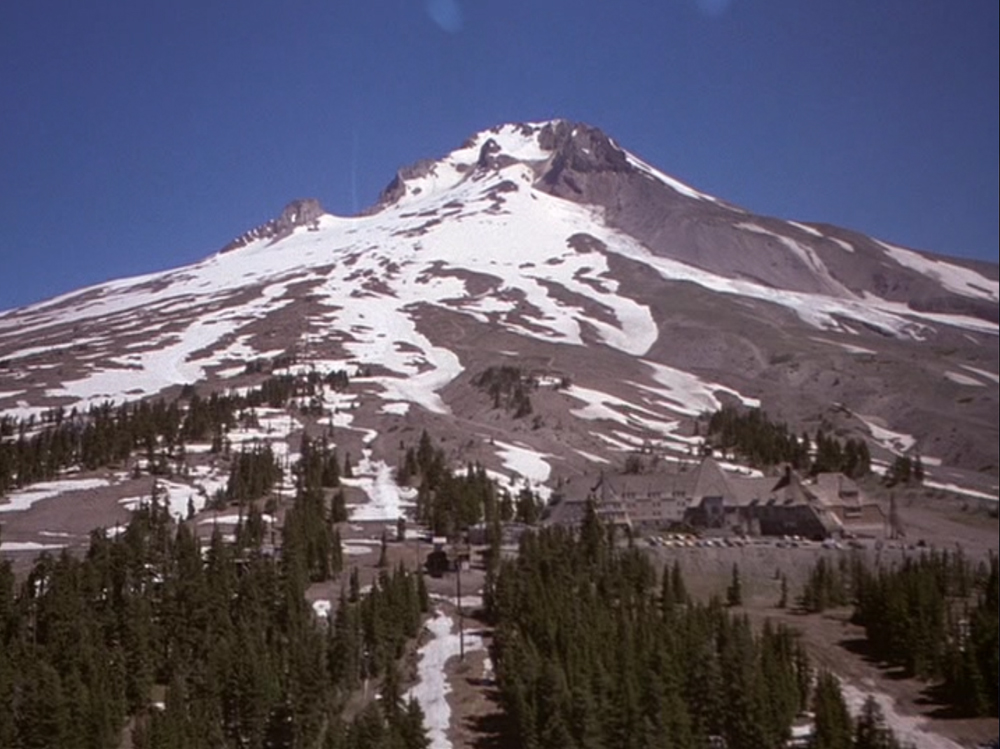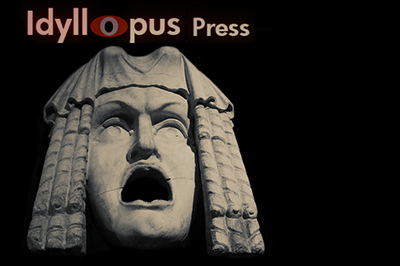THE HELICOPTER IN THE 1974 FILM HIMIKO AND ITS POSSIBLE RELATIONSHIP TO WHY

Go to Table of Contents of the analysis (which has also a statement on purpose and manner of analysis and a disclaimer as to caveat emptor and my knowing anything authoritatively, which I do not, but I do try to not know earnestly, with some discretion, and considerable thought).
In shot 4 of The Shining we are afforded a glimpse of the helicopter filming the VW traveling the Going-To-The-Sun Road.
There are 8 shots in the opening. In shot 8, as we are given a view of The Overlook, we are again afforded a glimpse of the helicopter by virtue of the blur of its rotor at the top of the screen.
Fodder for discussion has been whether these glimpses of the helicopter are intentional or not, and in part one of my analysis of The Shining I have played with their possible relationship to Dies Irae and the bird-like feel communicated by what has been viewing the VW and passes over it in shot 4, the impression of an eerie observer that rises above the limited vision of the banal with its ability to take in the broad horizon.
My feeling has been that if the audience can see the helicopter then Kubrick's intention was that we be able to see it, but the helicopter wasn't a significant element to me until I viewed the 1974 film Himiko by Masahiro Shinoda.
Kubrick's A Clockwork Orange has been said to have been influenced in part by a 1969 film called Funeral Parade of Roses by Toshio Matsumoto. The cinematographer for that film was Tatsuo Suzuki.
Tatsuo Suzuki was also cinematographer for Himiko.
Himiko concerns a 2nd-3rd century CE Japanese shamaness ruler, Himiko. In the opening shots of the film we view her from an elevated position. She is having ritual intercourse with the sun. A mirror focuses sunlight on her torso, functioning as an expression of this divine marriage between the sun and this woman.
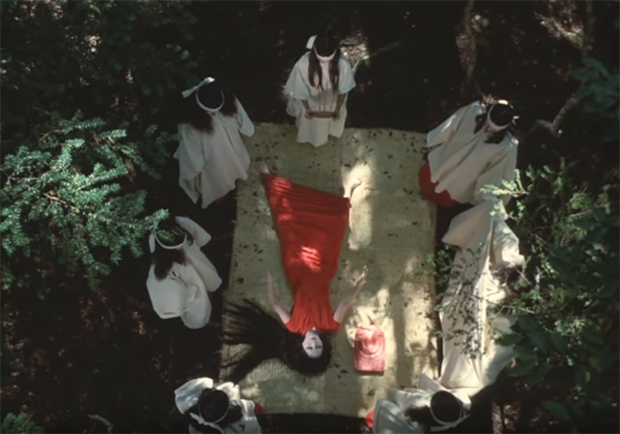
An early history of Himiko states she "occupied herself with magic and sorcery, bewitching the people. Though mature in age, she remained unmarried...there were few who saw her. She had one thousand women as attendants, but only one man. He served her food and drink and acted as a medium of communication." Her exact history is uncertain.
In the film, there is much intrigue, questions arising over Himiko's ability to rule, whether she is a reliable medium for the Sun God or if she is instead motivated by self-interest. Ultimately, believed to have lost her powers, betrayed by her male servant, Nashime, she is murdered by the Mountain God People (depicted by Butoh performers), after which we see her laid out, in death, at the bottom of a deep pit. With our initial view of her in the film, she was laid out on the ground in a verdant forest, engaging in sex with the sun. Our final view of her, prostrate on the ground, recalls the first, only now she is in this deep barren pit.
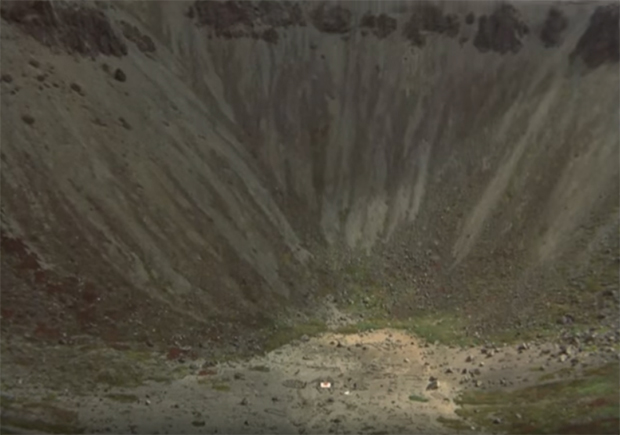
Nashime is observed wandering the forest at the film's end, mourning the loss of Himiko. Suddenly, he looks up, startled, and we see a shadow pass over this man. Is it a bird? This is the 2nd/3rd century CE, one would anticipate a bird, and we do initially and briefly wonder if this is a giant bird, but, no, the shadow is quickly revealed to belong to a twentieth century helicopter.
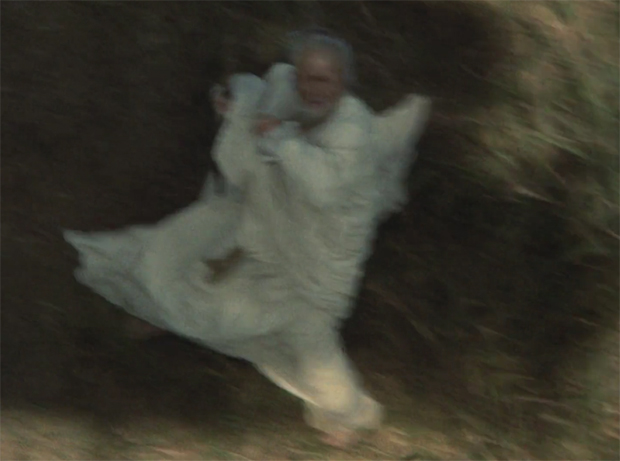
The camera within the helicopter zooms out and we see that the forest area in which Nashime is wandering is a burial mound called a kofun, which is in the shape of a keyhole. Around the kofun we see a modern neighborhood and a highway. We see the shadow of the helicopter upon the highway. It may be inferred that the pit in which we saw the dead Himiko is the area upon which this burial mound was formed.
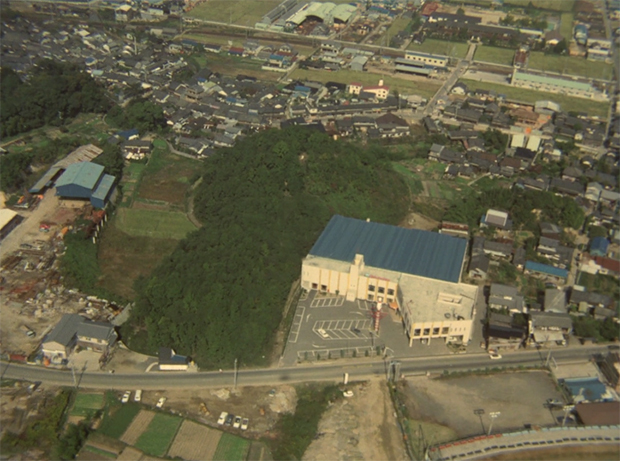
The disruption of the realism of the story, as Nashime looked up to see the helicopter passing over him, was such that it occurred to me, "That is where Kubrick got his helicopter shot." I checked the cinematographer and it turned out to be Tatsuo Suzuki, who filmed Funeral Parade of Roses, which I've already noted above has been said to have influenced Kubrick's A Clockwork Orange. Then I realized, of course, another tie-in to The Shining is the sun. Himiko opens the film with the elevated view of the sun shining on the shamaness-empress. Before the helicopter shot at the end we are shown a shot of a blood red sun filling the screen. Then we have Nashime looking up to see the helicopter crossing between himself and the sun, like an eclipse. Where we view the helicopter's shadow in The Shining is on the Going-To-The-Sun road.
With the emphasis, at beginning and end, being on an elevated view, Matsumoto has tied the shadow of the helicopter into the bright light of the Sun God for whom Himiko served as a medium and from which she derived her powers. As a ruler, she would also have been a descendant of the sun. Whatever the director intended by lifting not only the audience, but even a character, out of what we had seen as a story that happened in deep history and transplanting them into modern life, it would be difficult to say. I'm not familiar with his work. But Kubrick has often played with how the audience relates to the action and the characters of a film, such as in A Clockwork Orange where characters were sometimes placed in the position of being on a theatrical stage, and in which the audience sometimes took Alex's place as he viewed the horrors on the Ludovico cinema screen, and at other times the audience could be interpreted as the film that Alex was watching. In The Shining, as with other films of Kubrick's, we are shown impossible environments and impossible actions in these environments. Never-the-less, caught up in the magic of cinema, the audience perceives all as normal and abiding with a traditional form of storytelling.
We can also view the film's story, the history, as one that happens in perpetuity, continually unfolding into the present day, equivalent to the smell of burnt toast compared to the lingering past in The Shining.
Himiko ends with creating this break from the screen's fictionalized version of the past, inserting the real world, whereas The Shining begins with it. Almost immediately, in shot 4, we are shown the shadow of the helicopter, which removes us from the fictional setting, causing us to view the cinematographer and the making of the film. It's not a brazen disruption but then never, with Kubrick, are these breaks in the fiction so overt as to be intrusive or take the film out of a traditional category and place it in the experimental. The effect is so banal that most assume the helicopter is an accident that Kubrick left in as he didn't think it important. Instead, the helicopter provides an entrance to relating to the film in a different manner. The relationship of the audience to the screen is acknowledged, and at the film's end, just as Nashime was torn out of the fiction with the intrusion of the helicopter, looking up at it and directly at the camera, so does The Shining end with Jack, via a photo, engaging the camera and the audience with his gaze.
October 2018. Approx 1182 words or a little over 2 single-spaced pages. A 9 minute read at 130 wpm.
Return to the top of the page
Return to Table of Contents for "The Shining" analysis
Link to the TOC page for all the analyses

